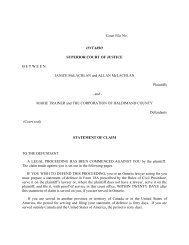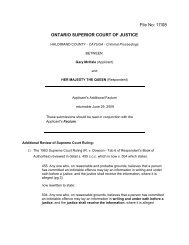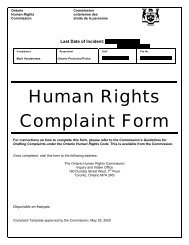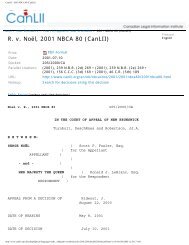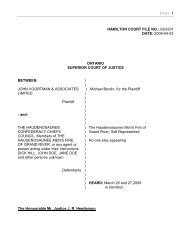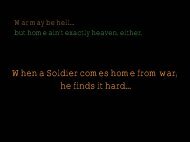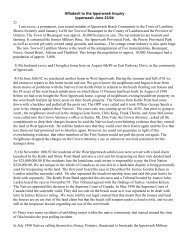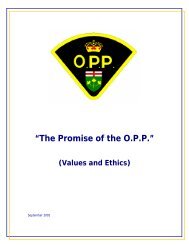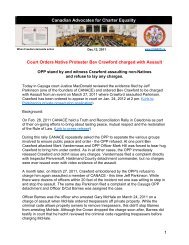Other People's Wars - Caledonia Wake Up Call
Other People's Wars - Caledonia Wake Up Call
Other People's Wars - Caledonia Wake Up Call
Create successful ePaper yourself
Turn your PDF publications into a flip-book with our unique Google optimized e-Paper software.
<strong>Other</strong> Peoples’ <strong>Wars</strong> -- Chapter Twobetween the Tamils of India and Sri Lanka. Within a short period of time, the first roving gangsof criminals turned into an insurgent movement capable of challenging the security forces of SriLanka and eventually controlling territory in Tamil areas.Even in the early 1980s, unity between Tamil insurgent groups did not exist. In 1983, theLTTE began targeting the People’s Liberation Organization of Tamil Eelam (PLOTE,) 36and the Tamil Eelam Liberation Organization (TELO,) assassinating its newest leader. In1986, the LTTE began another series of assaults on TELO positions in Jaffna. Almost 100 oftheir guerillas were killed by the LTTE, who then issued demands that all insurgents follow them.In December of 1986, the LTTE turned its attention to the Eelam People’s RevolutionaryLiberation Front (EPRLF) 37 , killing several hundred of their members. Fighting between theLTTE, the EPRLF, and PLOTE continued over the next several months. The Tigers’ sheerbrutality was successful in devastating their rivals for supremacy. It was not uncommon forsurrendering fighters, who were promised safety if they surrendered to the LTTE, to bemassacred immediately.Although active since the early 1970s, a bout of anti-Tamil rioting by Sinhalese Sri Lankansled to the LTTE’s transition from a small terrorist group to a major insurgency. As is commonin terrorism, the rioting was triggered by the insurgents themselves.On July 23, 1983, LTTE guerillas ambushed troops in the Jaffna area. A remote controlledmine was detonated, and was followed up by grenades and heavy automatic weapons fire,killing a total of 15 soldiers. In response, Sri Lankan soldiers stationed in the Jaffna area wenton what can only be called a rampage, destroying property owned by Tamils. Many Tamilscivilians were badly beaten by troops, and several died from the assaults. Rumors about theLTTE’s ambush quickly spread into Colombo, and Sinhalese mobs went “berserk” on the nightof July 24 in Tamil areas. Many Tamils were beaten or hacked to death, while others who wereaccused of being Tigers were burned alive.This senseless violence continued for several days while police and military personnel did littleto protect Tamil civilians. The violence displaced many Tamils. In Colombo alone, 50,000were left homeless, while as many as 100,000 were forced to flee their homes all across theisland. 38 Many of these unfortunate Tamils moved into Tamil speaking provinces, away fromthe mobs, where the presence of armed Tamil insurgents offered a false sense of security.For the LTTE, the massacre of Tamil civilians was a victory, and their small-scale armedattacks began to have the intended devastating political effects of polarizing the Sinhalese andTamil communities. This was clearly a textbook example of what the Brazilian Marxist CarlosMergella advocated in the Mini-manual of the Urban Guerilla, “the small engine starting thelarger engine”. Previous attacks had provoked similar, although much smaller reactions by thesecurity forces, which included the 1981 torching of the Jaffna library -- a cultural treasure of36A former Tiger who preferred a more Marxist and internationalist approach to insurgency was the creatorof PLOTE. Its founder was also of the land owning caste, and therefore higher in status than Prabhakaran.37The EPRLF drew its support mostly from Tamils in the Eastern Province, whereas the Tigers weredominant in the Jaffna region.38Ibid, pp. 24-6.42



